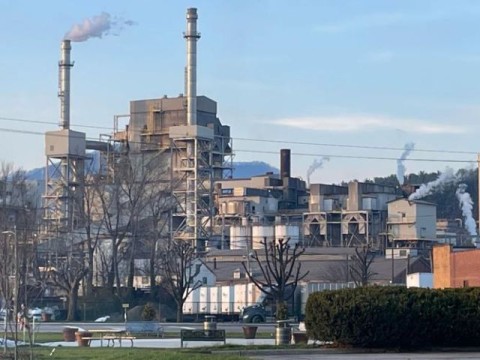Latest News
- Fiesta Hendersonville
- Apparent Elderly Couple Murder-Suicide in Waynesville
- Music on Main Hendersonville Summer 2024
- City of Asheville: Over $4.8 M Affordable Housing Projects
- Continuum of Care Elects Board Members: 2024 Point-In-Time Count Numbers

 WNCTIMES
Serving The Citizens of Western North Carolina Since 1995
WNCTIMES
Serving The Citizens of Western North Carolina Since 1995 Base-Edited T-cell Treatment for Resistant Leukemia
As part of a 'bench-to-bedside' collaboration between UCL and Great Ormond Street Hospital for Children (GOSH), three juvenile patients with relapsed T-cell leukemia have now been treated with base-edited T-cells. The data from the NHS clinical trial, which was published in The New England Journal of Medicine and funded by the MRC, demonstrates how donor CAR T cells were engineered using cutting-edge gene editing technology to alter single letters of their DNA code in order to combat leukemia.
The experience of using the cells in three patients is recounted, including 13-year-old Alyssa from Leicester, who was the first person in the world to be treated for T-cell acute lymphoblastic leukemia (T-ALL)* on a clinical trial last year. This malignancy of white blood cells is typically treated with chemotherapy, but if it returns, it can be difficult to eradicate. Alyssa's leukemia was undetectable within four weeks of receiving the cells, and she went on to have a successful bone marrow transplant and is still doing well at home almost a year later.
A second adolescent was cured of leukemia in a comparable amount of time and is now recuperating at home following a transplant. Sadly, despite the fact that a third child responded to CAR T cell therapy, their course was complicated by serious infections, and their family consented to transition to palliative care.
This first human application of base-editing technology was designed and developed by a group of UCL researchers led by Professor Waseem Qasim (UCL Great Ormond Street Institute of Child Health and Honorary Consultant at GOSH), in collaboration with Dr. Robert Chiesa and the Bone Marrow Transplant/CART/Haematology teams at GOSH.
The Wellcome Trust and the National Institute for Health and Care Research (NIHR) are funding the initiative.
Professor Waseem Qasim, Professor of Cell and Gene Therapy at UCL, said: "It's nice to be able to see the fruits of a long period of work coming together from multiple teams and being brought into play for new treatments. It's still early, and we need more follow-up and to treat more patients to know how it might impact treatments long term."
Dr. Robert Chiesa said: "It is really crucial that children affected by cancer who failed standard of care have access to innovative strategies in the context of clinical trials such as this. A research hospital such as GOSH offers the ideal setting for developing experimental approaches that might offer hope to children with otherwise very poor prognosis. This is possible due to the dedication of scientists, doctors, nurses, and allied professionals working for these children and their families."
To generate 'universal' anti-T-cell CAR T-cell banks for the study, the researchers utilized healthy donor T-cells obtained through the Anthony Nolan registry. In order to prevent the production of a specific protein, they modified the cells using 'base editing,' which involves chemically converting single nucleotide bases (letters of the DNA code) that transmit instructions for that protein.
The steps were:
1. Removing existing receptors so that T-cells from a donor can be banked and used without matching -- making them 'universal'.
2. Removing a 'flag' called CD7 that identifies them as T-cells (CD7 T-cell marker). Without this step, the T-cells -- which are designed to recognize and attack cancerous cells -- could also kill each other.
3. Removing a second 'flag' called CD52. This makes the edited cells invisible to some of the strong drugs given to the patient during the treatment process.
4. Adding a Chimeric Antigen Receptor (CAR) which recognizes the CD7 T-cell receptor on leukemic T-cells. The cells become armed against CD7 and recognize and fight T-cell leukemia.
Professor Qasim said: "Base editing involves making changes to single letters of DNA code to change signals and stop genes being expressed, without having to make a cut to the chromosomes. It works really well for engineering T cells."
The cells were produced as part of a long-running research program at the UCL Great Ormond Street Institute of Child Health supervised by Professor Qasim. Thanks to early funding from the Great Ormond Street Hospital Children's Charity (GOSH Charity), Professor Qasim has been a pioneer in developing novel CAR T-cell treatments employing cutting-edge gene editing techniques.
This treatment's clinical trial is still recruiting up to ten NHS patients with T-cell leukemia who have exhausted all conventional treatment options and have been referred by NHS pediatric leukemia specialists. In the GOSH Bone Marrow Transplant Department, patients are treated by the BMT/CART/Haematology teams. Patients eligible for NHS treatment who are interested in participating in this trial should contact their specialist healthcare provider. If widespread success is demonstrated, the teams anticipate offering it to more children earlier in their treatment journey, when they are less ill. In the future, they aim to make it available to adults with additional funding. The researchers also believe that the base editing technique could be applied to a variety of other conditions in which mutations in single DNA letters cause disease, such as sickle cell anemia.
Professor Qasim explained: "The technology itself could also have wide-reaching applications for corrections of certain inherited conditions such as sickle cell disease. As the technology matures and is shown to be safe, it could be applied quite widely, although there will need to be careful testing and longer-term studies."
The cells were manufactured as part of a long-standing research program led by Professor Qasim at UCL Great Ormond Street Institute of Child Health. Thanks to early funding from Great Ormond Street Hospital Children's Charity (GOSH Charity), Professor Qasim has been a pioneer in developing new CAR T-cell treatments using innovative gene editing techniques.
Source: University College London. "Further hope for base-edited T-cell therapy to treat resistant leukemia." ScienceDaily. ScienceDaily, 14 June 2023. <www.sciencedaily.com/releases/2023/06/230614220519.htm>.
Marge Farrington 6/2023
When you subscribe to the blog, we will send you an e-mail when there are new updates on the site so you wouldn't miss them.
About the author
Artificial Intelligence: A Potential Solution for Communities Struggling with Job Loss
Communities that have lost major employers, such as factories or mines, often face significant economic and social challenges. The loss of these employers can result in high unemployment rates, ...
NC Homesteaders MEETUP Fletcher April 26, 2019
North Carolina Youtube Homesteaders MEETUP!When: April 26, 20195pm - 7pmWhere: Bill Moore Community Park (aka fletcher park)85 Howard Gap RoadFletcher, NC 29732 Justin's channel: https://bit.ly/...
 How to resolve AdBlock issue?
How to resolve AdBlock issue? 
